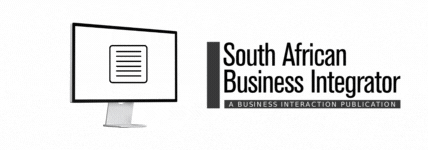During the Covid-19 pandemic, Prof Glenda Gray, President and CEO of the SA Medical Research Council (SAMRC), played a key advisory role. Part of this highlighted the Council’s research capacity. Here, Prof Gray speaks to SA BUSINESS INTEGRATOR about SA’s impressive legacy of ground-breaking medical innovation and research, and how the medical sector can be used as an instigator of proactive change.
How can our medical sector impact change on a socio-economic level, improve partnership opportunities with the private sector, and develop and retain talented individuals in STEM?
The SAMRC harnesses its science talent to address the four intersecting epidemics facing our country today, that of:
- communicable diseases (HIV, TB and SARS-CoV-2);
- communicable disease (diabetes, hypertension, cardiovascular diseases and cancer);
- maternal and infant mortality; and
- trauma (intimate partner violence, inter-personal violence, car accidents, etc).
By addressing these intersecting epidemics, we can impact on survival and life expectancy. We are committed to the transformation of health research in South Africa, and in my position as the SAMRC President I have overseen this both in the Council and in our extramural programmes at universities.
We have improved equity in science funding through driving initiatives that have significantly improved funding for young scientists, black African scientists and women. The SAMRC has also established key collaborations and partnerships that will impact scientific research locally.
We have established a collaboration with the Beijing Genomics Institute to fund the first whole genome sequencing resource in South Africa. The vision to design and establish the first facility on the African continent capable of large-scale whole genome sequencing started in 2017. We opened this Genomics Centre in 2019, displaying the latest sequencing technology and cutting-edge facility design. This dedicated centre builds on South Africa’s previous participation in the Human Heredity and Health in Africa initiative (H3Africa).
Mindful of the lack of science leaders in South Africa, we established a novel grant to support mid-career scientists to become science leaders. We have established key funding initiatives within the BRICS countries, Grand Challenges South Africa with the Bill and Melinda Gates Foundation, the SAMRC-UK MRC Newton Fund, SAMRC-Forté (Sweden) Collaboration to Support Inequalities in Health and Health Systems, the SAMRC-CIHR Healthy Life Trajectories Initiative (HeLTI) in collaboration with Canada, China and India, the US-South Africa Programme for Collaborative Biomedical Research (NIH), and the India- South Africa Collaborative Research Programme on HIV/AIDS and TB, as well as an SAMRC-EDCTP collaboration on Malaria in Mozambique.
Another area we are interested in is funding innovation in cancer and non-communicable diseases using precision medicine methods. We collaborate with the Technology Innovation Agency (TIA) and Department of Science and Innovation (DSI) in this area as well as investing in medical devices and diagnostics.
How important is it secure more private sector partnerships, and what will this look like?
Working with the private sector ensures the commercialisation of the technologies we have invested in. Our recent collaboration with Afrigen and Biovac in vaccine manufacturing is a critical partnership to ensure the sustainability of that sector.
Private sector partnerships are critical for innovation. We do need partners who can commercialise drugs, devices, diagnostics and vaccines.
We are able to partner with the private sector right from inception, or to support product or clinical development or transfer innovation to the private sector for commercialisation.
The SAMRC also supports pharma-funded product or drug development, and these partnerships enable the movement of these products towards commercialisation.
In terms of achieving SDG 3, how is SA progressing?
Sustainable Development Goal 3 (good health and wellbeing) is a critical SDG for countries in Africa, where universal health coverage is limited, and health systems are under tremendous strain.
We will need both curative and preventative/promotive approaches if we are to attain SDG3. Legislative changes should focus on mechanisms to attain universal health coverage.
At a population level, interventions to detect, diagnose and treat non-communicable diseases like hypertension and diabetes will improve morbidity and improve survival, especially in the elderly. Any interventions that increase life expectancy will have ramifications in all facets of our society, including socio-economic benefits and GDP growth.
Highlight key projects whereby a multi-disciplinary approach has the capacity to unlock opportunities.
South Africa has complexities that are becoming increasingly challenging. These complex matters affect the broader society and its most vulnerable members; it needs knowledge that is not in one discipline.
A multi-disciplinary approach by definition requires work and knowledge outside of that known discipline. It needs to cross cognitive boundaries by sharing scientific understanding and consequently integrating institutional capacity to provide real solutions in real time. Health research concerns itself with building on knowledge and expertise to improve the health of all South Africans. We cannot ignore that improvement does not occur in silos.
A benefit to that reality is that although problems become more complex, there is accelerated growth of knowledge and strength from varied disciplines to reach South Africans in all levels of society. For example, if access to clinics is an issue in a rural environment, then there should be a way that technology and business can come together to bring treatments and healthcare to people.
What is the scope for a transdisciplinary approach for tackling health care challenges?
There are two ways in which a transdisciplinary approach can expand the work of improving the health of South Africans in the context of health science research:
- Capacity development: The SAMRC is the most significant local funder of health research and a custodian of the values that embody health research and has developed funding mechanisms, which supports research leaders in different areas of health research. The purpose of doing so is to create opportunities that grow early-career and mid-career scientists.
The outcome of developing such scientists is proven through the opportunity given to them to implement the findings of their research by work. For example, maternal health – specifically breastfeeding – is an area studied by health systems, producing a breastfeeding series through The Lancet journal to scientifically illustrate the proven lifelong benefits of breastfeeding for infants and children.
Combining this research with business would seek to not polarise commercialised baby formula with scientifically incorrect messaging – the intention is to ensure parents make an informed decision.
- Funding and collaboration: More funding and support towards health science research is important from all sectors of business. Tackling health care challenges require a multidisciplinary approach. Researchers need to work together to share ideas and solutions even if they work in a different research discipline. The health challenges that we face in this world cannot be solved by medical research alone, we need scientists to continue to collaborate just like they did during the Covid-19 pandemic.
What are the greatest challenges facing the medical research sector?
Health equity: South Africa is diverse in population but also in access. There are disparities in healthcare capacity across different regions. Health equity is an area that experienced challenges pre-apartheid and now post-apartheid.
There are lots of improvements but a much more advanced conversation needs to happen in ensuring health equity.
An advanced conversation towards health equity can include a bigger intention on personalised medicine. Personalised medicine aims to provide more precise and effective medical care to individuals, as opposed to a “one-size-fits-all” approach, with the goal of improving patient outcomes and overall health.
Personalised medicine is a medical model that is used to characterise an individual’s phenotype and genotype (e.g. molecular and genetic profiling, medical imaging, and lifestyle data), to tailor the right therapeutic strategy for the right person at the right time, and to determine the predisposition to disease, and to deliver timely and targeted prevention.
Advancing healthcare technology: Again, here we can emphasise on the importance of ‘transdisciplinarity’ to create sustainable healthcare through research science and other disciplines.
For example, BGI Group recently donated a gene sequencer, DNBSEQ-G400, to the SAMRC. This equipment helps to further improve the institute’s sequencing capability and benefit the people of South Africa and beyond. It is also imperative that such contributions are made by South African businesses within technology. To understand what these contributions can be, businesses must engage with health science research.
What interventions are needed to overcome challenges?
Grow healthcare research scientists: A varied pool of healthcare research scientists is needed. There is still room. Filling up that room in the long term means educating the current generation about opportunities available as a scientist.
One can easily argue that is it solely up to organisations like the SAMRC to avail that education to scholars, but predominantly that education needs to happen through career guidance.
With health equity and the interest in pertinent matters such as personalised medicine it is important to make use of AI technology. AI technology can source information readily and make it timeously available to career guidance counsellors.
Health equity therefore can be broken down to the simple detail of information sharing; information being accessed at the right time by right people to benefit a large community. That requires an investment that needs to be evaluated so that it can identify areas of growth and improvement.
More state-of-the-art labs and equipment: South Africans are pioneering their own healthcare research in this generation, ensuring the continued contributions of healthcare research.
What are the key opportunities in the medical research sector that can help cement SA as a leading medical research, innovation and production hub?
Paediatrics and child health: Having completed a post-doctorate in clinical epidemiology, focusing on clinical trial designs, socio-behavioural and translational research, I see that there are still opportunities in managing childhood illnesses and investing in early childhood development.
HIV and AIDS research: Recently, an international study gave a thumbs-up for the safe use of Tenofir Disoproxil Fumarate and Emtricitabine as pre-exposure prophylaxis (PrEP), a big step towards change. Yet, HIV and AIDS are still a significant problem and there are still socio-demographic factors that impact providing treatment.
What are some of the key lessons you have learned as a leader? Growth is constant!This is one of the major lessons I have acquired; the lesson that illustrates that I am always learning and discovering that through science life can be improved. As a leader this teaches you compassion for those you lead and also for yourself.


